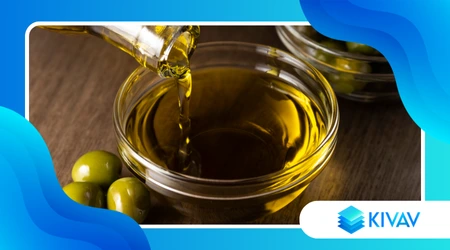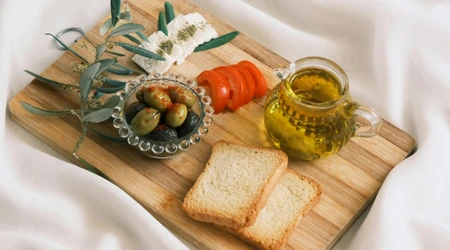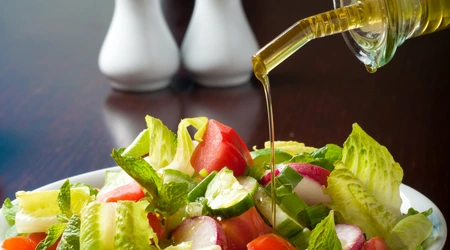How to use olive oil correctly

Using olive oil correctly It is an art that defines Italian cuisine, a gesture that combines tradition and science.
Announcements
This ingredient, a pillar of the Mediterranean diet, is not just a condiment, but a protagonist that requires attention and knowledge.
Each bottle embodies history, territory, and care, and its use deserves respect to enhance its qualities.
In an era where sustainability and food quality are at the center of debate, knowing how to choose, store, and use extra virgin olive oil is essential.
This article explores techniques, common mistakes, and practical tips for turning any dish into a masterpiece. Are you ready to discover how a drizzle of olive oil can change everything?
Announcements
Olive oil is more than just a cooking fat: it's a cultural symbol, a product that tells the story of Italy.
Its versatility makes it indispensable, but only a conscious use preserves its organoleptic and nutritional properties.
With the growing interest in authentic cuisine, use olive oil correctly it becomes a skill that distinguishes an amateur chef from a true enthusiast.
Get ready to immerse yourself in a journey through the techniques, flavors, and secrets of this golden elixir.
Choosing extra virgin olive oil: the first step towards conscious use
Not all olive oils are created equal. Extra virgin, obtained from the first cold pressing, is the purest and richest in antioxidants.
Choosing a quality oil means reading the label: origin, cultivar, and harvest date are crucial details.
A DOP or IGP oil guarantees traceability and respect for local traditions. For example, a Tuscan extra virgin olive oil has herbaceous notes, while a Sicilian one may be fruitier.
Freshness is another determining factor. Olive oil loses quality over time, so favor bottles with a recent harvest date, ideally within the last year.
Avoid anonymous supermarket oils: a artisanal product, perhaps from a local mill, makes all the difference.
++ Italian-style meat cooking methods
Using olive oil correctly It begins with an informed choice, which values the territory and the work of the producers.
A common mistake is ignoring the aromatic profile. Each oil has a unique character that pairs well with the dish. An intense oil pairs well with red meats, while a delicate one enhances fish or vegetables.
Experiment, taste, and discover which variety elevates your dishes. The right choice is the first step to excellent results.

Storage: How to Protect Your Olive Oil
The quality of olive oil deteriorates if stored improperly. Light, heat, and air are its worst enemies, oxidizing its beneficial compounds.
Store oil in dark bottles or cans, away from windows or stoves. The ideal temperature is between 15 and 18°C, never above 25°C, to preserve its flavor.
Avoid leaving the bottle open for too long. Oxygen accelerates degradation, so use well-sealed containers. A trick?
See also: How to Preserve Aromatic Herbs
Buy smaller sizes if you don't consume oil regularly. Using olive oil correctly It also means protecting it, ensuring that every drop retains its freshness.
Don't underestimate time. An oil that's been open for months loses its vivacity, even if stored well.
Check the expiration date and use within 18 months of harvest. Careful storage is an investment in the quality of your dishes.
Cooking techniques: raw, cooked, or fried?
Extra virgin olive oil shines best when used raw. A drizzle on bruschetta or a salad enhances its flavor without altering its properties.
According to a 2023 study by the University of Bari, raw oil preserves up to 90% of polyphenols, powerful antioxidants.
Using olive oil correctly raw means adding it at the end of preparation, never overcooking it.
Extra virgin olive oil is excellent for cooking, but it requires some precautions. Its smoke point (around 190-210°C) makes it suitable for light sautéing or baking.
However, for deep frying, a refined or seed oil is better, as it can withstand higher temperatures. A practical example: use extra virgin olive oil for sautéing vegetables, but not for frying chips.
The analogy is simple: extra virgin olive oil is like a fine wine. You wouldn't use it for long cooking, but to enhance a finished dish.
Experiment in moderation: a spoonful of raw oil on a hot soup can transform it into a sensory experience.
| Usage | Temperature | Advise |
|---|---|---|
| Raw | Environment | Add at the end of the dish for maximum flavor |
| Cooking | Up to 190°C | Ideal for sautéing and baking |
| Frying | Over 200°C | Prefer refined oils |
Mistakes to Avoid: Myths and Bad Habits
Many believe that the more oil you use, the better. This is wrong. Too much covers the flavors instead of enhancing them. A tablespoon per serving is often sufficient.
Using olive oil correctly It requires balance: think of a painter who carefully measures his colors.
Another myth is that extra virgin olive oil is unsuitable for frying. While it's not ideal for high temperatures, it works well for lightly fried foods, such as zucchini or fish.
Just don't exceed the smoking point. Also, don't reuse the oil: it loses quality and forms harmful compounds.
Ignoring the taste of oil is a common mistake. Rancid or stale oil ruins any dish.
Smell and taste before using: a good extra virgin olive oil has fresh, herbaceous, or fruity notes. Trust your senses to avoid unpleasant surprises.
Perfect pairings: how to choose the right oil for every dish
Olive oil is like a musician: it must harmonize with the other ingredients. A robust extra virgin olive oil, like one from Puglia, enhances rustic dishes like orecchiette with turnip greens.
A delicate oil, such as a Ligurian one, is perfect for fish carpaccio or mozzarella.
Experiment with pairings. For example, a fruity oil enhances desserts like vanilla ice cream: try drizzling it for a surprising contrast.
Using olive oil correctly It means understanding the dish and choosing an oil that complements it, not overwhelms it.
Don't forget seasonality. A freshly pressed oil, in autumn, is ideal for warm dishes like minestrone.
In summer, a more mature oil is perfect for fresh salads. Each season offers new opportunities to explore flavors.
Olive oil in modern cuisine: innovation and tradition
Contemporary cuisine is rediscovering olive oil in creative ways. Michelin-starred chefs use it in emulsions, gels, or foams to surprise the palate.
For example, a chef from Rome created a mayonnaise with extra virgin olive oil to accompany shellfish, combining tradition and innovation.
You can experiment at home too. Try marinating meat with oil, herbs, and lemon: the result is juicy and aromatic.
Using olive oil correctly Today it means daring, while respecting its Mediterranean roots.
Sustainability is a hot topic in 2025. Choose oils from mills that adopt eco-friendly practices, such as hand-harvesting or using renewable energy.
Supporting responsible producers is one way to preserve this Italian treasure.
The impact on health: why extra virgin olive oil is an ally

Extra virgin olive oil is a cornerstone of the Mediterranean diet, known to reduce the risk of cardiovascular disease.
A 2024 Harvard study confirms that 2 tablespoons a day improves heart health. Using olive oil correctly It means integrating it in moderation.
Rich in vitamin E and polyphenols, it fights cellular aging. However, don't overdo it: 100 g of oil contains 900 kcal.
Balance its use with a varied diet to maximize its benefits.
A practical example?
Replace butter with extra virgin olive oil in recipes like savory pies. The result is lighter and more aromatic, with a touch of authentic Italian flair.
Conclusion: Olive oil as a lifestyle
Using olive oil correctly It's not just a technique, but a way of experiencing cooking with awareness and passion.
Every choice, from the bottle to the plate, reflects respect for tradition and love of taste.
In a fast-paced world, taking the time to carefully select, store, and apply oil is a gesture of authenticity.
Whether you're an expert cook or a beginner, extra virgin olive oil is an ally that transforms dishes and brings people together.
And you, how will you use your next drizzle of olive oil to tell your story in the kitchen?
This ingredient isn't just food, it's culture. Embrace it with curiosity, experiment, and be inspired.
Italian cuisine awaits you to create, savor, and celebrate.
Frequently Asked Questions
1. Can I use extra virgin olive oil for frying?
Yes, for light frying (under 190°C), but for high temperatures, choose refined oils. Use fresh oil and don't reuse it.
2. How do I recognize a quality oil?
Look for labels with the origin, cultivar, and recent harvest date. DOP/IGP oils and artisanal mills are guarantees of excellence.
3. Does olive oil expire?
It doesn't expire, but it loses quality 18 months after harvest. Store it well and consume it within a year of opening.
4. Can I use it in desserts?
Absolutely! A drizzle of extra virgin olive oil on ice cream or in savory pies adds an aromatic and original touch.
